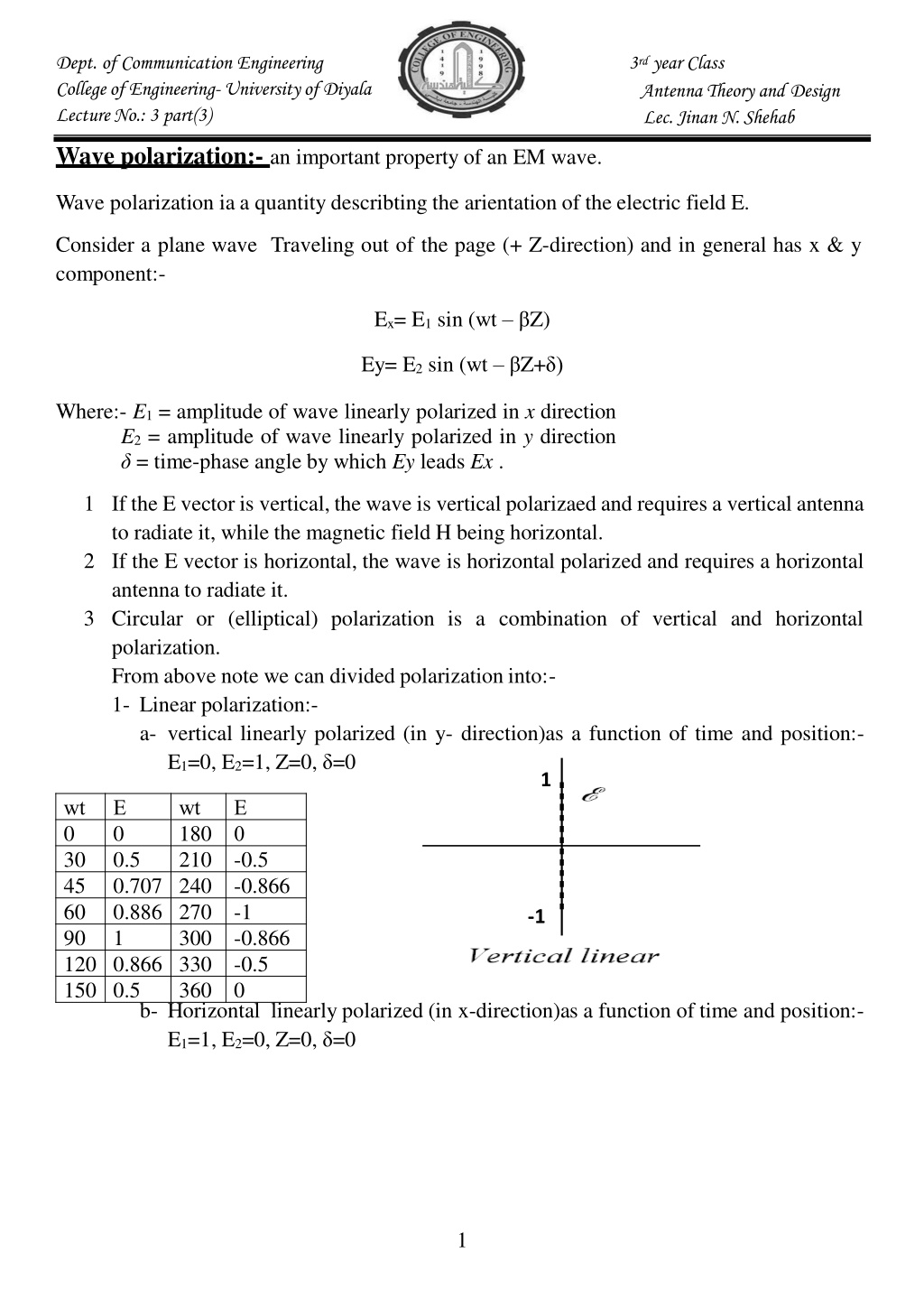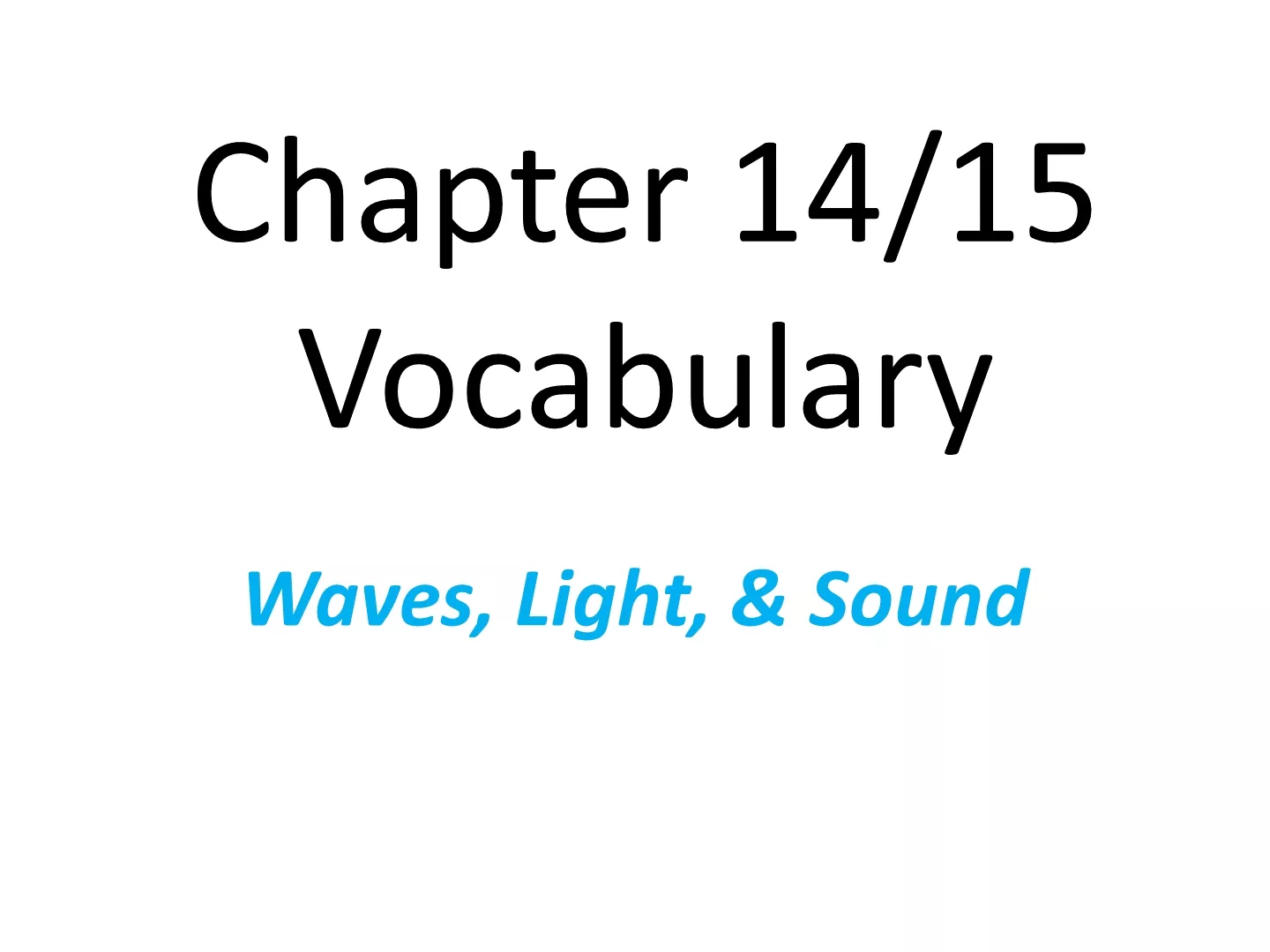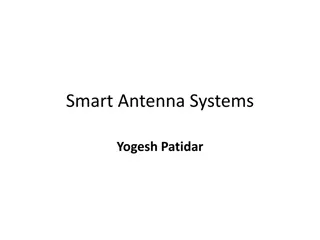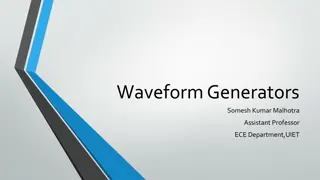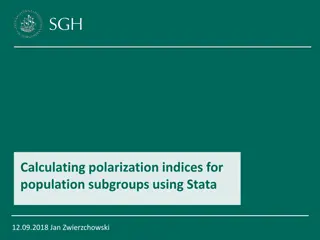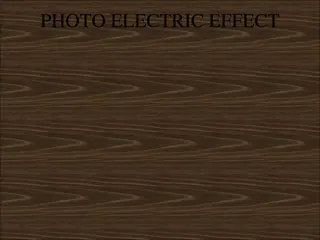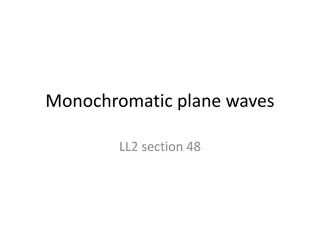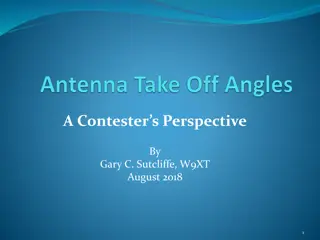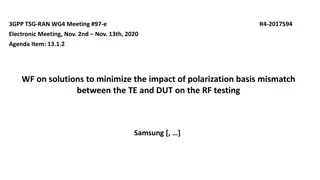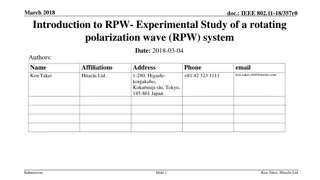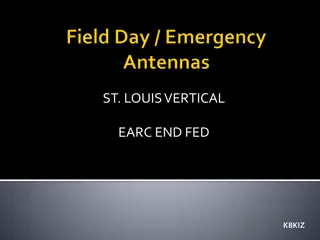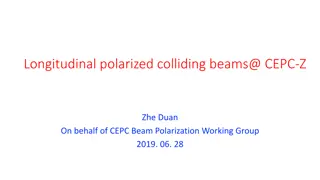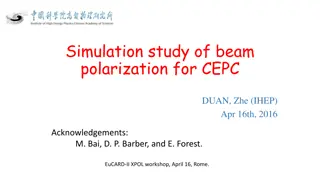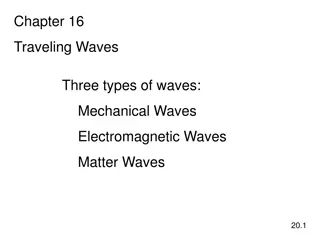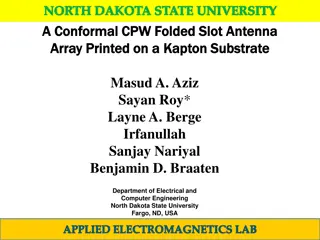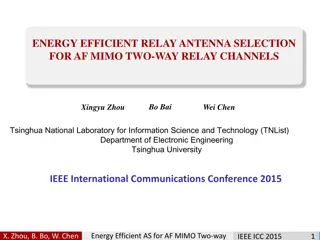Wave Polarization in Antenna Theory and Design
Wave polarization is a crucial property of electromagnetic waves, describing the orientation of the electric field. Linear, circular, and elliptical polarizations are discussed in detail, along with their implications in antenna design. Understanding wave polarization is essential for optimizing antenna performance in communication engineering.
Uploaded on Feb 22, 2025 | 0 Views
Download Presentation

Please find below an Image/Link to download the presentation.
The content on the website is provided AS IS for your information and personal use only. It may not be sold, licensed, or shared on other websites without obtaining consent from the author.If you encounter any issues during the download, it is possible that the publisher has removed the file from their server.
You are allowed to download the files provided on this website for personal or commercial use, subject to the condition that they are used lawfully. All files are the property of their respective owners.
The content on the website is provided AS IS for your information and personal use only. It may not be sold, licensed, or shared on other websites without obtaining consent from the author.
E N D
Presentation Transcript
Dept. of Communication Engineering College of Engineering-University of Diyala Lecture No.: 3 part(3) 3rd year Class Antenna Theory and Design Lec. Jinan N. Shehab Wave polarization:- an important property of an EM wave. Wave polarization ia a quantity describting the arientation of the electric field E. Consider a plane wave Traveling out of the page (+ Z-direction) and in general has x & y component:- Ex= E1 sin (wt Z) Ey= E2 sin (wt Z+ ) Where:- E1 = amplitude of wave linearly polarized in x direction E2 = amplitude of wave linearly polarized in y direction = time-phase angle by which Ey leads Ex . 1 If the E vector is vertical, the wave is vertical polarizaed and requires a vertical antenna to radiate it, while the magnetic field H being horizontal. 2 If the E vector is horizontal, the wave is horizontal polarized and requires a horizontal antenna to radiate it. 3 Circular or (elliptical) polarization is a combination of vertical and horizontal polarization. From above note we can divided polarization into:- 1- Linear polarization:- a- vertical linearly polarized (in y- direction)as a function of time and position:- E1=0, E2=1, Z=0, =0 1 wt 0 30 45 60 90 120 0.866 330 150 0.5 E 0 0.5 0.707 240 0.886 270 1 wt 180 210 E 0 -0.5 -0.866 -1 -0.866 -0.5 0 -1 300 360 b- Horizontal linearly polarized (in x-direction)as a function of time and position:- E1=1, E2=0, Z=0, =0 1
Dept. of Communication Engineering College of Engineering-University of Diyala Lecture No.: 3 part(3) 3rd year Class Antenna Theory and Design Lec. Jinan N. Shehab -1 1 c- This wave is said to be linearly polarized in the plane at angle 45. E1=1, E2=1, Z=0, =0 Ey ET= ? 0 0 0.5 0.5 0.707 0.707 0.707 1 0.886 0.886 1.224 1 1 1.414 120 0.886 0.866 1.224 150 0.5 0.5 0.707 180 0 0 0 210 -0.5 -0.5 0.707 240 -0.866 -0.866 1.224 270 -1 -1 1.414 300 -0.866 -0.866 1.224 330 -0.5 -0.5 0.707 360 0 0 0 wt Ex 2 + ?2 0 30 45 60 90 0 2- Elliptically polarization:- a- The wave is said to be elliptically polarized at E rotates as a function of time:- E1=1, E2=1, Z=0, =45 Ex Ey ET= ? 0 0.707 0.707 0.5 0.966 1.087 0.707 1 1.224 0.886 0.966 1.31 1 0.707 1.224 120 0.886 0.258 0.923 135 0.707 0 0.707 150 0.5 -0.258 0.562 180 0 0.707 0.707 wt 2 + ?2 0 30 45 60 90 2
Dept. of Communication Engineering College of Engineering-University of Diyala Lecture No.: 3 part(3) 3rd year Class Antenna Theory and Design Lec. Jinan N. Shehab 210 -0.5 240 -0.866 270 -1 300 -0.866 330 -0.5 360 0 -0.966 -0.966 -0.707 -0.258 0.258 0.707 1.087 1.31 1.224 0.923 0.563 0.707 b- The wave is said to be Anti-clock wise elliptically polarized:- E1=1, E2=1, Z=0, =-45 wt Ex Ey 2 + ?2 ET= ? 0.707 0.563 0.707 1.31 1.306 1.31 1.306 1.087 0.707 0 30 45 60 90 120 0.886 135 0.707 150 0.5 180 0 210 -0.5 240 -0.866 270 -1 300 -0.866 330 -0.5 360 0 0 0.5 0.707 0.886 1 -0.707 -0.258 0 0.966 0.707 0.966 1 0.966 0.707 0.2588 0.563 -0.258 -0.707 -0.966 -0.966 -0.707 0.923 1.224 1.31 1.086 0.707 c- This typeofpolarizationiscalledcircularpolarizationin thistype ofpolarization, E rotate as a function of time in a circule form:- d- E1=1, E2=1, Z=0, =90. Ey ET= ? 1 1 0.5 0.866 1 0.707 0.707 1 0.886 0.57 1 1 0 1 120 0.886 -0.5 1 135 0.707 -0.707 1 150 0.5 -0.866 1 180 0 -1 1 210 -0.5 -0.866 1 240 -0.866 -0.5 1 wt Ex 2 + ?2 0 30 45 60 90 0 3
Dept. of Communication Engineering College of Engineering-University of Diyala Lecture No.: 3 part(3) 3rd year Class Antenna Theory and Design Lec. Jinan N. Shehab 270 -1 300 -0.866 330 -0.5 360 0 0 0.5 0.866 1 1 1 1 1 Axial Ratio(AR):- is the ratio of the major to minor axis of the polarization ellipse. ?2 = 1 The instantanous total vector field E:- ? ?= 1sin(? ) + ?2sin(? + ) 1 = ?2, = 90 ,? = 1 + However for circular polarization:- Tilt angle (? ) :- is the angle between theX-axis and the intersectioncomponents EXand Ey. 4
Dept. of Communication Engineering College of Engineering-University of Diyala Lecture No.: 3 part(3) 3rd year Class Antenna Theory and Design Lec. Jinan N. Shehab ?2 1 = ? 1 ? 0 90 ? 2?= ? 2 1 , = +ve AR means left hand (clockwise). -ve AR means right hand. The tilt angle ?is :- 12 1?2 ?2 ?2 1 1 ?=2 ? 2 5
Dept. of Communication Engineering College of Engineering-University of Diyala Lecture No.: 3 part(3) 3rd year Class Antenna Theory and Design Lec. Jinan N. Shehab 6
Dept. of Communication Engineering College of Engineering-University of Diyala Lecture No.: 3 part(3) 3rd year Class Antenna Theory and Design Lec. Jinan N. Shehab Effective Area/ Effective Aperture/ CaptureArea:- 7
